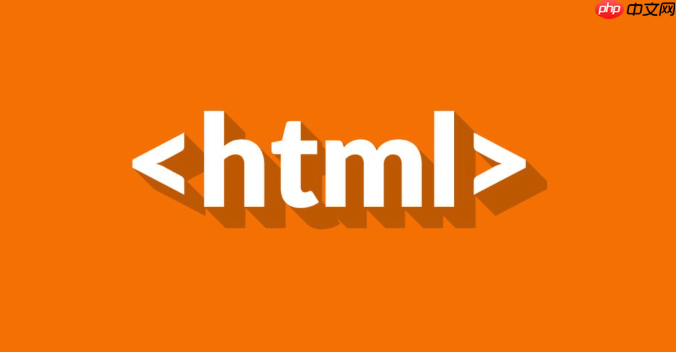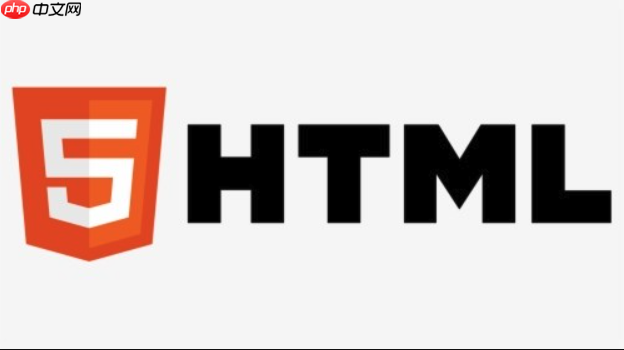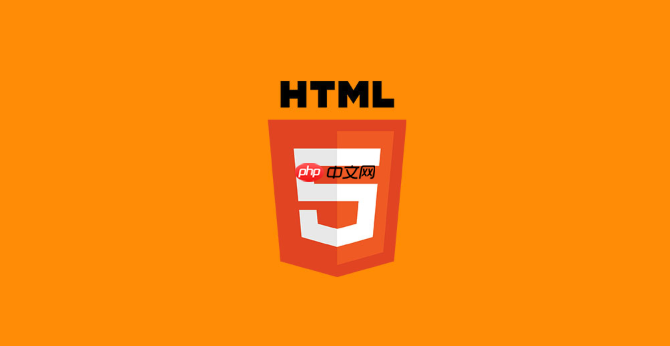<template>标签定义惰性html片段,页面加载时不渲染、不执行脚本、不加载资源;2. 使用javascript克隆其content属性(documentfragment)后插入dom才能激活内容;3. 相比display: none的隐藏div,<template>不创建dom节点、不占用布局计算、更优性能;4. 在web components中,<template>为自定义元素提供结构与样式,结合shadow dom实现封装和样式隔离;5. 注意模板内脚本不会自动执行,需手动创建新script插入;6. 模板内样式若插入light dom会全局生效,应结合shadow dom避免污染;7. <template>无原生数据绑定,需javascript手动更新内容;8. 现代浏览器支持良好,老旧浏览器需polyfill。因此,<template>是构建可复用、高性能、封装良好组件的标准推荐方式。

HTML中的
<template>

要理解
template
div
p
img
script
style
<template>
定义一个HTML模板非常直接:
立即学习“前端免费学习笔记(深入)”;

<template id="myTemplate">
<style>
.greeting { color: blue; }
</style>
<div class="greeting">
<p>你好,世界!</p>
<img src="placeholder.png" alt="占位图">
<script>
// 这段脚本不会在模板加载时自动执行
console.log("这段文字你不会在控制台看到,直到模板被激活。");
</script>
</div>
</template>当你需要使用这个模板时,你需要用JavaScript来获取它,然后访问它的
content
content
DocumentFragment
document.importNode()
DocumentFragment
const template = document.getElementById('myTemplate');
// 确保模板存在
if (template) {
// 克隆模板内容,true 表示深度克隆,包括所有子节点
const clone = document.importNode(template.content, true);
// 现在你可以操作这个克隆体了,比如修改里面的文本或属性
clone.querySelector('p').textContent = '这是从模板克隆出来的内容!';
clone.querySelector('img').src = 'actual-image.jpg';
// 将克隆体插入到页面的某个位置,例如 body
document.body.appendChild(clone);
// 此时,模板中的脚本才会执行
// 并且样式也会应用(如果它在Shadow DOM中,或者被直接插入到Light DOM)
}这种模式的优势在于,它提供了一种标准、高效的方式来处理可复用的UI片段,特别是在构建动态界面或者Web Components时,它的价值就显得尤为突出。

<template>
div
这问题问得挺好,因为在
<template>
display: none;
visibility: hidden;
首先,一个被
display: none;
div
div
而
<template>
<template>
template.content
所以,从性能和资源管理的角度看,
<template>
display: none;
<template>
<template>
<template>
说到现代前端,Web Components是绕不开的话题,而
<template>
<template>
Web Components旨在提供一种标准化的方式来创建可复用的、封装的组件。它主要由三部分组成:Custom Elements(自定义元素)、Shadow DOM(影子DOM)和HTML Templates(HTML模板)。
<template>
通常,当我们创建一个自定义元素时,我们会将组件的内部结构和样式定义在一个
<template>
connectedCallback
this.attachShadow({ mode: 'open' })这里有个简单的例子:
// 定义一个模板
const myComponentTemplate = document.createElement('template');
myComponentTemplate.innerHTML = `
<style>
/* 这些样式只作用于Shadow DOM内部,不会泄露到外部 */
:host {
display: block;
border: 1px solid #ccc;
padding: 10px;
}
h3 {
color: green;
}
</style>
<h3>我的自定义组件标题</h3>
<p><slot></slot></p>
`;
// 定义自定义元素
class MyCustomElement extends HTMLElement {
constructor() {
super();
// 创建Shadow DOM
const shadowRoot = this.attachShadow({ mode: 'open' });
// 克隆模板内容并添加到Shadow DOM
shadowRoot.appendChild(myComponentTemplate.content.cloneNode(true));
}
connectedCallback() {
console.log('MyCustomElement 已添加到文档。');
}
}
// 注册自定义元素
customElements.define('my-custom-element', MyCustomElement);在使用这个组件时:
<my-custom-element> <p>这是通过 slot 插入的内容。</p> </my-custom-element>
你看,通过
<template>
style
<slot>
<template>
<template>
虽然
<template>
一个最常见的“坑”就是,你可能会想当然地认为放在
<template>
script
<template>
script
script
textContent
另一个需要留意的点是样式的作用域。如果你在
<template>
<style>
<style>
<template>
此外,
<template>
{{ data }}textContent
src
href
最后,虽然现代浏览器对
<template>
以上就是template标签的作用?HTML模板怎么定义?的详细内容,更多请关注php中文网其它相关文章!

HTML怎么学习?HTML怎么入门?HTML在哪学?HTML怎么学才快?不用担心,这里为大家提供了HTML速学教程(入门课程),有需要的小伙伴保存下载就能学习啦!


![smarty模板引擎[函数篇]](https://img.php.cn/upload/course/000/000/068/62554919bac5d558.png)
![Smarty模板引擎[基础篇]](https://img.php.cn/upload/course/000/000/068/62567ac03df54222.png)
Copyright 2014-2025 https://www.php.cn/ All Rights Reserved | php.cn | 湘ICP备2023035733号